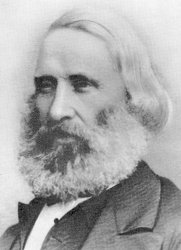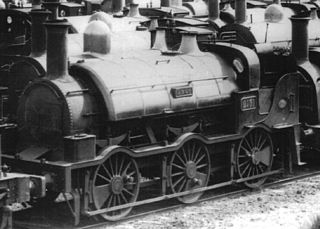
The first Locomotives of the Great Western Railway (GWR) were specified by Isambard Kingdom Brunel but Daniel Gooch was soon appointed as the railway's Locomotive Superintendent. He designed several different 7 ft 1⁄4 in broad gauge types for the growing railway, such as the Firefly and later Iron Duke Class 2-2-2s. In 1864 Gooch was succeeded by Joseph Armstrong who brought his standard gauge experience to the workshops at Swindon. To replace some of the earlier locomotives, he put broad gauge wheels on his standard gauge locomotives and from this time on all locomotives were given numbers, including the broad gauge ones that had previously carried just names.

The Great Western Railway (GWR) Ariadne Class and Caliph Class were broad gauge 0-6-0 steam locomotives designed for goods train work by Daniel Gooch and are often referred to as his Standard Goods locomotives.

The Great Western Railway Metropolitan Class 2-4-0T broad gauge steam locomotives with condensing apparatus were used for working trains on the Metropolitan Railway. The equipment was later removed, though the class continued to work suburban trains on GWR lines in London. The class was introduced into service between June 1862 and October 1864, and withdrawn between June 1871 and December 1877.
The Great Western Railway (GWR) Bogie Class 4-4-0ST were broad gauge steam locomotives for passenger train work. The first two locomotives of this class were introduced into service in August/September 1849, with the remainder following between June 1854 and March 1855. All but one were withdrawn between October 1871 and 1873, with the final locomotive being withdrawn in December 1880.

The Great Western Railway Iron Duke Class 4-2-2 was a class of 7 ft 1⁄4 in broad gauge steam locomotives for express passenger train work.
The Great Western Railway Sir Watkin Class were 0-6-0T broad gauge steam locomotives with side tanks. They were designed for working goods trains through to the underground Metropolitan Railway in London. This class was introduced into service between December 1865 and the last was withdrawn at the end of the GWR broad gauge in May 1892. They were all named after directors and senior officers of the railway.
The Great Western Railway Swindon Class 0-6-0 broad gauge steam locomotives for goods train work. This class was introduced into service between November 1865 and March 1866, and withdrawn between June 1887 and the end of the GWR broad gauge in May 1892. The entire class was sold to the Bristol and Exeter Railway between July 1872 and September 1874, where they were numbered 96-109, but returned to the GWR when that railway was absorbed. The locomotives were then renumbered 2077-2090; their names were not restored.
The Great Western Railway Sun Class 2-2-2 broad gauge steam locomotives for passenger train work. This class was introduced into service between April 1840 and January 1842, and withdrawn between January 1864 and June 1879.

Joseph Armstrong was an English locomotive engineer and the second locomotive superintendent of the Great Western Railway. His younger brother George and one of his sons also became outstanding engineers in the employment of the GWR.

The South Devon Railway 2-4-0 locomotives were small 2-4-0T broad gauge locomotives operated on the South Devon Railway, mainly on its branch lines such as that to Ashburton.

The Leopard class were four 4-4-0 saddle tank broad gauge designed for passenger trains but were also used on goods trains when required. They were built by the Avonside Engine Company for the South Devon Railway, but also operated on its associated railways. Although designed for easy conversion to standard gauge this was never carried out.
The four Tornado class locomotives were 0-6-0 saddle tank broad gauge locomotives operated on the South Devon Railway and associated railways. They were designed for goods trains but were also used on passenger trains when required.

The eight Dido class locomotives were 0-6-0 saddle tank broad gauge locomotives operated on the South Devon Railway and Cornwall Railway and associated other adjacent railways. They were designed for goods trains but were also used on passenger trains when required.
The ten Buffalo class locomotives were 0-6-0 saddle tank broad gauge locomotives operated on the South Devon Railway, Cornwall Railway and West Cornwall Railway. They were designed for goods trains but were also used on passenger trains when required.
The seven Bristol and Exeter Railway 2-2-2WT locomotives were small 2-2-2 well tank locomotives designed by James Pearson for working branch lines such as those to Tiverton and Clevedon, as well as acting as pilot locomotives at Bristol. The first was delivered in 1851, and the last withdrawn in 1880.
The Bristol and Exeter Railway 2-4-0 locomotives were two classes of 2-4-0 broad gauge steam locomotives.
Thunderer was the first of a pair of steam locomotives built for the Great Western Railway (GWR), England, by R. & W. Hawthorn & Co. whose design was very different from other locomotives. In order to meet Isambard Kingdom Brunel's strict specifications, an 0-4-0 frame carried the 'engine', while the boiler was on a separate six-wheeled frame. The driving wheels were geared 10:27 in order to reduce the cylinder stroke speed while allowing high track speed, in line with the specifications.

The 1076 Class were 266 double framed 0-6-0 tank locomotives built by the Great Western Railway between 1870 and 1881; the last one, number 1287, was withdrawn in 1946. They are often referred to as the Buffalo Class following the naming of locomotive 1134.
The GWR 378 Class was a class of 30 standard-gauge 2-2-2 steam locomotives on the Great Western Railway in Britain. They were introduced in 1866, and the class remained intact until 1898. Several were altered to the 0-6-0 wheel arrangement, and the last was withdrawn from service in 1920.
The LCDR Brigand class was a pair of steam locomotives of the 0-4-2 wheel arrangement supplied to the London, Chatham and Dover Railway (LCDR). They were designed by Patrick Stirling for the Glasgow and South Western Railway (GSWR), which ordered twenty in 1860 from Sharp, Stewart & Co.. At this time, the LCDR needed more locomotives but had little money available, so their locomotive superintendent, William Martley, visited various manufacturers to find out what was available quickly and cheaply. He arranged for two of the locomotives ordered by the GSWR to be delivered instead to the LCDR – they arrived in August 1861, two more being ordered from Sharp, Stewart for the GSWR as replacements.









